Yong Rui
Enriching Knowledge Distillation with Intra-Class Contrastive Learning
Sep 26, 2025Abstract:Since the advent of knowledge distillation, much research has focused on how the soft labels generated by the teacher model can be utilized effectively. Existing studies points out that the implicit knowledge within soft labels originates from the multi-view structure present in the data. Feature variations within samples of the same class allow the student model to generalize better by learning diverse representations. However, in existing distillation methods, teacher models predominantly adhere to ground-truth labels as targets, without considering the diverse representations within the same class. Therefore, we propose incorporating an intra-class contrastive loss during teacher training to enrich the intra-class information contained in soft labels. In practice, we find that intra-class loss causes instability in training and slows convergence. To mitigate these issues, margin loss is integrated into intra-class contrastive learning to improve the training stability and convergence speed. Simultaneously, we theoretically analyze the impact of this loss on the intra-class distances and inter-class distances. It has been proved that the intra-class contrastive loss can enrich the intra-class diversity. Experimental results demonstrate the effectiveness of the proposed method.
REFINE-CONTROL: A Semi-supervised Distillation Method For Conditional Image Generation
Sep 26, 2025Abstract:Conditional image generation models have achieved remarkable results by leveraging text-based control to generate customized images. However, the high resource demands of these models and the scarcity of well-annotated data have hindered their deployment on edge devices, leading to enormous costs and privacy concerns, especially when user data is sent to a third party. To overcome these challenges, we propose Refine-Control, a semi-supervised distillation framework. Specifically, we improve the performance of the student model by introducing a tri-level knowledge fusion loss to transfer different levels of knowledge. To enhance generalization and alleviate dataset scarcity, we introduce a semi-supervised distillation method utilizing both labeled and unlabeled data. Our experiments reveal that Refine-Control achieves significant reductions in computational cost and latency, while maintaining high-fidelity generation capabilities and controllability, as quantified by comparative metrics.
Towards Understanding Feature Learning in Parameter Transfer
Sep 26, 2025Abstract:Parameter transfer is a central paradigm in transfer learning, enabling knowledge reuse across tasks and domains by sharing model parameters between upstream and downstream models. However, when only a subset of parameters from the upstream model is transferred to the downstream model, there remains a lack of theoretical understanding of the conditions under which such partial parameter reuse is beneficial and of the factors that govern its effectiveness. To address this gap, we analyze a setting in which both the upstream and downstream models are ReLU convolutional neural networks (CNNs). Within this theoretical framework, we characterize how the inherited parameters act as carriers of universal knowledge and identify key factors that amplify their beneficial impact on the target task. Furthermore, our analysis provides insight into why, in certain cases, transferring parameters can lead to lower test accuracy on the target task than training a new model from scratch. Numerical experiments and real-world data experiments are conducted to empirically validate our theoretical findings.
DivControl: Knowledge Diversion for Controllable Image Generation
Jul 31, 2025Abstract:Diffusion models have advanced from text-to-image (T2I) to image-to-image (I2I) generation by incorporating structured inputs such as depth maps, enabling fine-grained spatial control. However, existing methods either train separate models for each condition or rely on unified architectures with entangled representations, resulting in poor generalization and high adaptation costs for novel conditions. To this end, we propose DivControl, a decomposable pretraining framework for unified controllable generation and efficient adaptation. DivControl factorizes ControlNet via SVD into basic components-pairs of singular vectors-which are disentangled into condition-agnostic learngenes and condition-specific tailors through knowledge diversion during multi-condition training. Knowledge diversion is implemented via a dynamic gate that performs soft routing over tailors based on the semantics of condition instructions, enabling zero-shot generalization and parameter-efficient adaptation to novel conditions. To further improve condition fidelity and training efficiency, we introduce a representation alignment loss that aligns condition embeddings with early diffusion features. Extensive experiments demonstrate that DivControl achieves state-of-the-art controllability with 36.4$\times$ less training cost, while simultaneously improving average performance on basic conditions. It also delivers strong zero-shot and few-shot performance on unseen conditions, demonstrating superior scalability, modularity, and transferability.
LMAgent: A Large-scale Multimodal Agents Society for Multi-user Simulation
Dec 13, 2024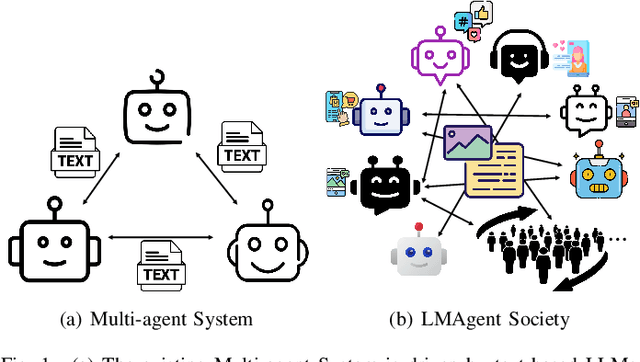
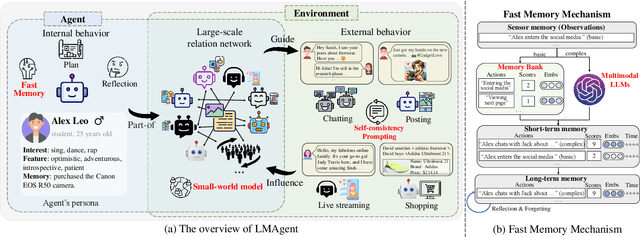
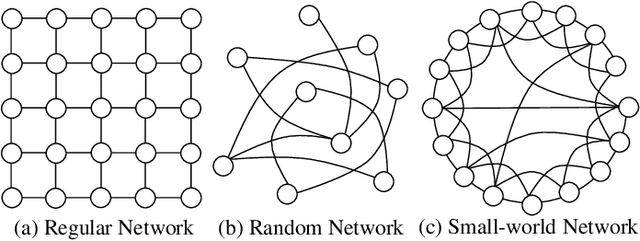
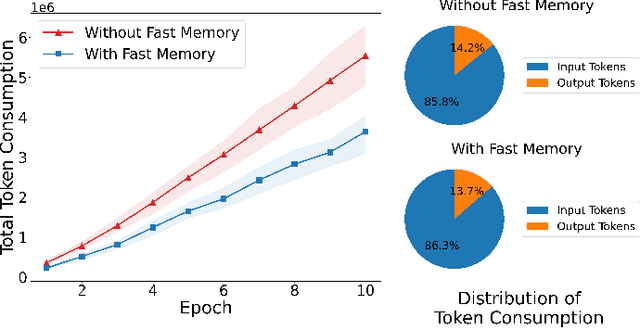
Abstract:The believable simulation of multi-user behavior is crucial for understanding complex social systems. Recently, large language models (LLMs)-based AI agents have made significant progress, enabling them to achieve human-like intelligence across various tasks. However, real human societies are often dynamic and complex, involving numerous individuals engaging in multimodal interactions. In this paper, taking e-commerce scenarios as an example, we present LMAgent, a very large-scale and multimodal agents society based on multimodal LLMs. In LMAgent, besides freely chatting with friends, the agents can autonomously browse, purchase, and review products, even perform live streaming e-commerce. To simulate this complex system, we introduce a self-consistency prompting mechanism to augment agents' multimodal capabilities, resulting in significantly improved decision-making performance over the existing multi-agent system. Moreover, we propose a fast memory mechanism combined with the small-world model to enhance system efficiency, which supports more than 10,000 agent simulations in a society. Experiments on agents' behavior show that these agents achieve comparable performance to humans in behavioral indicators. Furthermore, compared with the existing LLMs-based multi-agent system, more different and valuable phenomena are exhibited, such as herd behavior, which demonstrates the potential of LMAgent in credible large-scale social behavior simulations.
KIND: Knowledge Integration and Diversion in Diffusion Models
Aug 14, 2024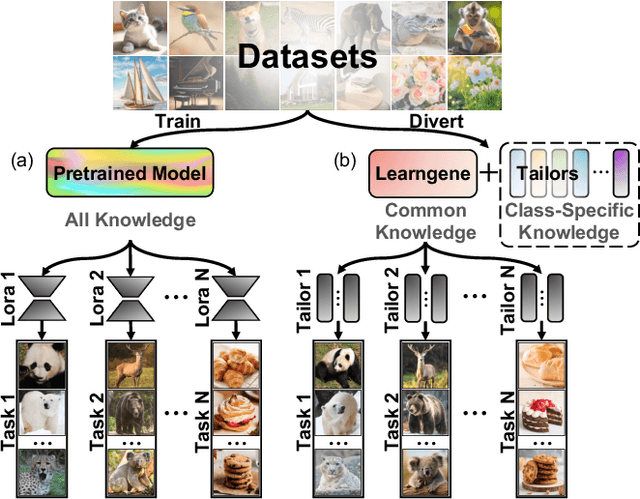

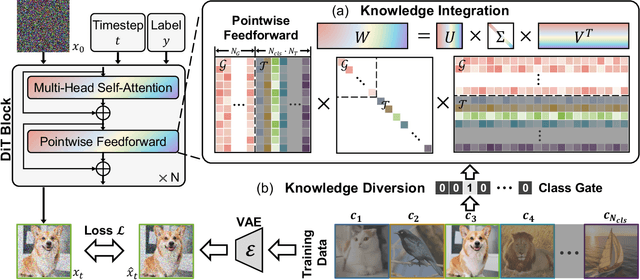
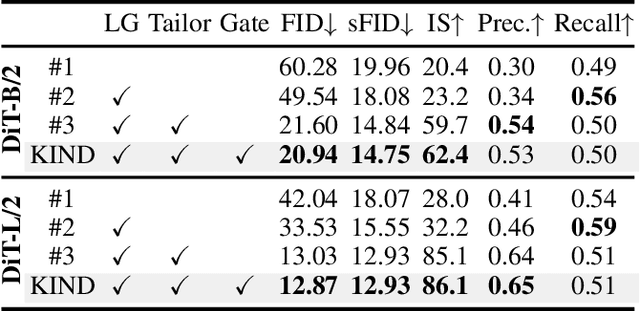
Abstract:Pre-trained models have become the preferred backbone due to the expansion of model parameters, with techniques like Parameter-Efficient Fine-Tuning (PEFTs) typically fixing the parameters of these models. However, pre-trained models may not always be optimal, especially when there are discrepancies between training tasks and target tasks, potentially resulting in negative transfer. To address this, we introduce \textbf{KIND}, which performs \textbf{K}nowledge \textbf{IN}tegration and \textbf{D}iversion in diffusion models. KIND first integrates knowledge by decomposing parameter matrices of models using $U$, $\Sigma$, and $V$ matrices, formally inspired by singular value decomposition (SVD). Then it explicitly partitions the components of these matrices into \textbf{learngenes} and \textbf{tailors} to condense common and class-specific knowledge, respectively, through a class gate. In this way, KIND redefines traditional pre-training methods by adjusting training objectives from maximizing model performance on current tasks to condensing transferable common knowledge, leveraging the \textit{Learngene} framework. We conduct experiments on ImageNet-1K and compare KIND with PEFT and other learngene methods. Results indicate that KIND achieves state-of-the-art performance compared to other PEFT and learngene methods. Specifically, the images generated by KIND achieves more than 6.54 and 1.07 decrease in FID and sFID on DiT-L/2, utilizing only 45.4M trainable parameters and saving at least 35.4G FLOPs in computational cost.
Structure Matters: Tackling the Semantic Discrepancy in Diffusion Models for Image Inpainting
Apr 01, 2024Abstract:Denoising diffusion probabilistic models for image inpainting aim to add the noise to the texture of image during the forward process and recover masked regions with unmasked ones of the texture via the reverse denoising process.Despite the meaningful semantics generation,the existing arts suffer from the semantic discrepancy between masked and unmasked regions, since the semantically dense unmasked texture fails to be completely degraded while the masked regions turn to the pure noise in diffusion process,leading to the large discrepancy between them. In this paper,we aim to answer how unmasked semantics guide texture denoising process;together with how to tackle the semantic discrepancy,to facilitate the consistent and meaningful semantics generation. To this end,we propose a novel structure-guided diffusion model named StrDiffusion,to reformulate the conventional texture denoising process under structure guidance to derive a simplified denoising objective for image inpainting,while revealing:1)the semantically sparse structure is beneficial to tackle semantic discrepancy in early stage, while dense texture generates reasonable semantics in late stage;2)the semantics from unmasked regions essentially offer the time-dependent structure guidance for the texture denoising process,benefiting from the time-dependent sparsity of the structure semantics.For the denoising process,a structure-guided neural network is trained to estimate the simplified denoising objective by exploiting the consistency of the denoised structure between masked and unmasked regions.Besides,we devise an adaptive resampling strategy as a formal criterion as whether structure is competent to guide the texture denoising process,while regulate their semantic correlations.Extensive experiments validate the merits of StrDiffusion over the state-of-the-arts.Our code is available at https://github.com/htyjers/StrDiffusion.
DomainVerse: A Benchmark Towards Real-World Distribution Shifts For Tuning-Free Adaptive Domain Generalization
Mar 05, 2024Abstract:Traditional cross-domain tasks, including domain adaptation and domain generalization, rely heavily on training model by source domain data. With the recent advance of vision-language models (VLMs), viewed as natural source models, the cross-domain task changes to directly adapt the pre-trained source model to arbitrary target domains equipped with prior domain knowledge, and we name this task Adaptive Domain Generalization (ADG). However, current cross-domain datasets have many limitations, such as unrealistic domains, unclear domain definitions, and the inability to fine-grained domain decomposition, which drives us to establish a novel dataset DomainVerse for ADG. Benefiting from the introduced hierarchical definition of domain shifts, DomainVerse consists of about 0.5 million images from 390 fine-grained realistic domains. With the help of the constructed DomainVerse and VLMs, we propose two methods called Domain CLIP and Domain++ CLIP for tuning-free adaptive domain generalization. Extensive and comprehensive experiments demonstrate the significance of the dataset and the effectiveness of the proposed methods.
A Survey on Video Moment Localization
Jun 13, 2023Abstract:Video moment localization, also known as video moment retrieval, aiming to search a target segment within a video described by a given natural language query. Beyond the task of temporal action localization whereby the target actions are pre-defined, video moment retrieval can query arbitrary complex activities. In this survey paper, we aim to present a comprehensive review of existing video moment localization techniques, including supervised, weakly supervised, and unsupervised ones. We also review the datasets available for video moment localization and group results of related work. In addition, we discuss promising future directions for this field, in particular large-scale datasets and interpretable video moment localization models.
Hybrid Representation Learning via Epistemic Graph
May 31, 2023Abstract:In recent years, deep models have achieved remarkable success in many vision tasks. Unfortunately, their performance largely depends on intensive training samples. In contrast, human beings typically perform hybrid learning, e.g., spontaneously integrating structured knowledge for cross-domain recognition or on a much smaller amount of data samples for few-shot learning. Thus it is very attractive to extend hybrid learning for the computer vision tasks by seamlessly integrating structured knowledge with data samples to achieve more effective representation learning. However, such a hybrid learning approach remains a great challenge due to the huge gap between the structured knowledge and the deep features (learned from data samples) on both dimensions and knowledge granularity. In this paper, a novel Epistemic Graph Layer (EGLayer) is developed to enable hybrid learning, such that the information can be exchanged more effectively between the deep features and a structured knowledge graph. Our EGLayer is composed of three major parts: (a) a local graph module to establish a local prototypical graph through the learned deep features, i.e., aligning the deep features with the structured knowledge graph at the same granularity; (b) a query aggregation model to aggregate useful information from the local graphs, and using such representations to compute their similarity with global node embeddings for final prediction; and (c) a novel correlation loss function to constrain the linear consistency between the local and global adjacency matrices.
 Add to Chrome
Add to Chrome Add to Firefox
Add to Firefox Add to Edge
Add to Edge